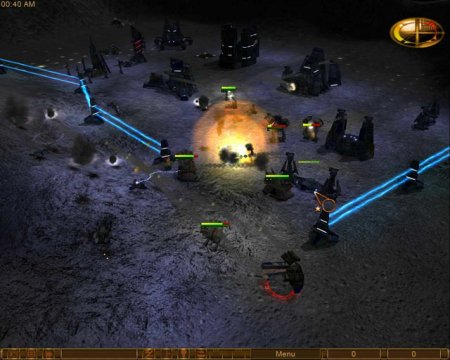

In May 1958, ARF began covertly researching the potential consequences of a nuclear explosion on the Moon. In 1949, the Armour Research Foundation (ARF), based at the Illinois Institute of Technology, began studying the effects of nuclear explosions on the environment.

Trying to reclaim lost ground, the United States embarked on a series of new projects and studies, which eventually included the launch of Explorer 1, the creation of the Defense Advanced Research Projects Agency ( DARPA), and NASA. Sputnik was the first artificial satellite in orbit around the Earth, and the surprise of its successful launch, compounded by the resounding failure of Project Vanguard to launch an American satellite after two attempts, had been dubbed the " Sputnik crisis" by the media and was the impetus for the beginning of the Space Race. The project documents remained secret for nearly 45 years, and despite Reiffel's revelations, the United States government has never officially recognized its involvement in the study.ĭuring the Cold War, the Soviet Union took the lead in the Space Race with the launch of Sputnik 1 on 4 October 1957. A young Carl Sagan was part of the team responsible for predicting the effects of a nuclear explosion in vacuum and low gravity and in evaluating the scientific value of the project. The existence of the US project was revealed in 2000 by a former executive at the National Aeronautics and Space Administration (NASA), Leonard Reiffel, who had led the project in 1958. A similar project by the Soviet Union (Project E-4) also never came to fruition. If executed, the plan might have led to a potential militarization of space. The project was never carried out, being cancelled after "Air Force officials decided its risks outweighed its benefits", and because a Moon landing would undoubtedly be a more popular achievement in the eyes of the American and international public alike. This was meant as a show of force resulting in a possible boosting of domestic morale in the capabilities of the United States, a boost that was needed after the Soviet Union took an early lead in the Space Race and was also working on a similar project. If the explosive device detonated on the surface, and not in a lunar crater, the flash of explosive light would have been faintly visible to people on Earth with their naked eye. The aim of the project was to detonate a nuclear bomb on the Moon, which would help in answering some of the mysteries in planetary astronomy and astrogeology. Project A119, also known as A Study of Lunar Research Flights, was a top-secret plan developed in 1958 by the United States Air Force. Cover of A Study of Lunar Research Flights – Volume I


 0 kommentar(er)
0 kommentar(er)
